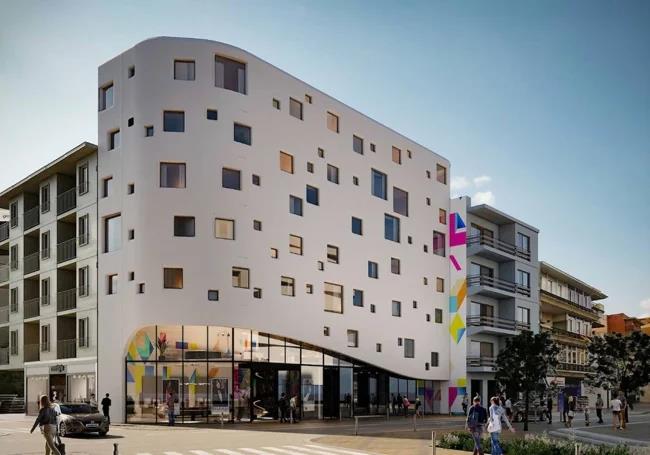From commercial to housing use: Malaga's city planners authorise two such conversions every day
The pressure on property in the capital of the Costa del Sol is very real and the city council has given the green light to convert 17 such buildings into tourist apartment complexes in the last nine months
The phenomenon of converting commercial premises into housing in Malaga continues to increase in a real estate market under pressure from rising prices and a shortage of supply in relation to the demand generated by the creation of new homes. The lists of building permits granted by the municipal urban planning department (Urbanismo) over the last nine months (May 2024 to January this year) in the provincial capital give a good account of this. According to SUR calculations, during this period many changes of use of commercial premises and offices for housing have been authorised, giving rise to 595 new residential units. In other words, the city council has been authorising some two dwellings per day in commercial or tertiary spaces in buildings in the city.
The months in which most changes of use of premises were approved were in May and July last year, with 100 and 107 new dwellings respectively being approved. This type of action to generate new housing supply is spread throughout all the city's districts. It is also striking that there are cases of licences to divide a house into two or even three residential units, although there are not yet too many of those.
In order to convert a commercial property for habitation, a number of requirements must be met in terms of height, lighting, ventilation and floor space. Thus, the height of the premises must be at least 2.70 metres, all habitable rooms must have an opening for natural lighting and ventilation and the surface area of each resulting dwelling cannot be less than 30.5 square metres.
It is also necessary to check whether or not the building where it is located has already reached the maximum density of homes permitted by urban planning regulations. If the premises comply with these conditions, the owner must present a change-of-use project signed by a competent expert, which must comply with all the regulations required for a newly constructed dwelling. In addition to the conditions required by city hall, there may be another impediment to this type of change of use, as the owners' associations may expressly prohibit the possibility of converting premises into dwellings.
More tourist accommodation complexes
On the other hand, the balance of building permits granted by Urbanismo in the last nine months shows that the council has authorised a total of 17 new projects for tourist apartment buildings since May last year, with a total of more than 240 units. This type of development, for which the municipal government team has announced that it will carry out a study leading to some kind of regulation, also now covers the whole city from Cruz del Humilladero to El Palo.

As a result, one of the projects that was authorised in recent months, specifically last September, is that of property development company Suba to build an eye-catching building of 37 tourist flats on a site located in the Cuatro Esquinas area in the district of El Palo, at the junction of Calle Mar and Avenida de Juan Sebastián Elcano, opposite Plaza Demófilo Peláez Santiago.
Similarly, between December and January, city planners have given the green light to new tourist apartment complexes in the Victoria district and surrounding locations. They include a project of 22 tourist flats in a disused building located at number 34 Calle Amargura, next to the gardens of Plaza de Alfonso XII, another of 29 flats on a plot located at number 6 Calle Mitjana, another of four flats in an existing building at number 7 Calle Cristo de la Epidemia, and another of 49 flats at number 5 Plaza de la Merced have been given the go-ahead. In the Capuchinos area, a development of 14 tourist flats has been approved on a site located at number 5 Calle San Félix de Cantalicio, and another of 9 flats at number 23 Calle Regimiento, between the avenues of Capuchinos and Barceló.

